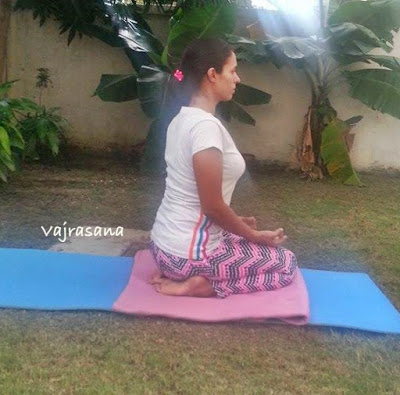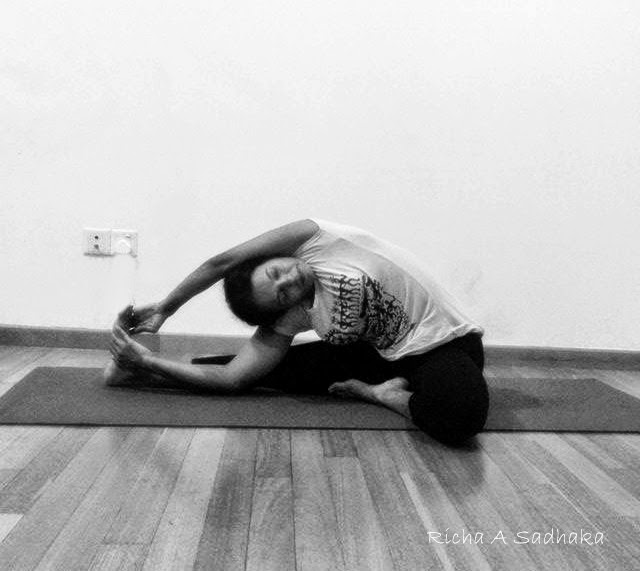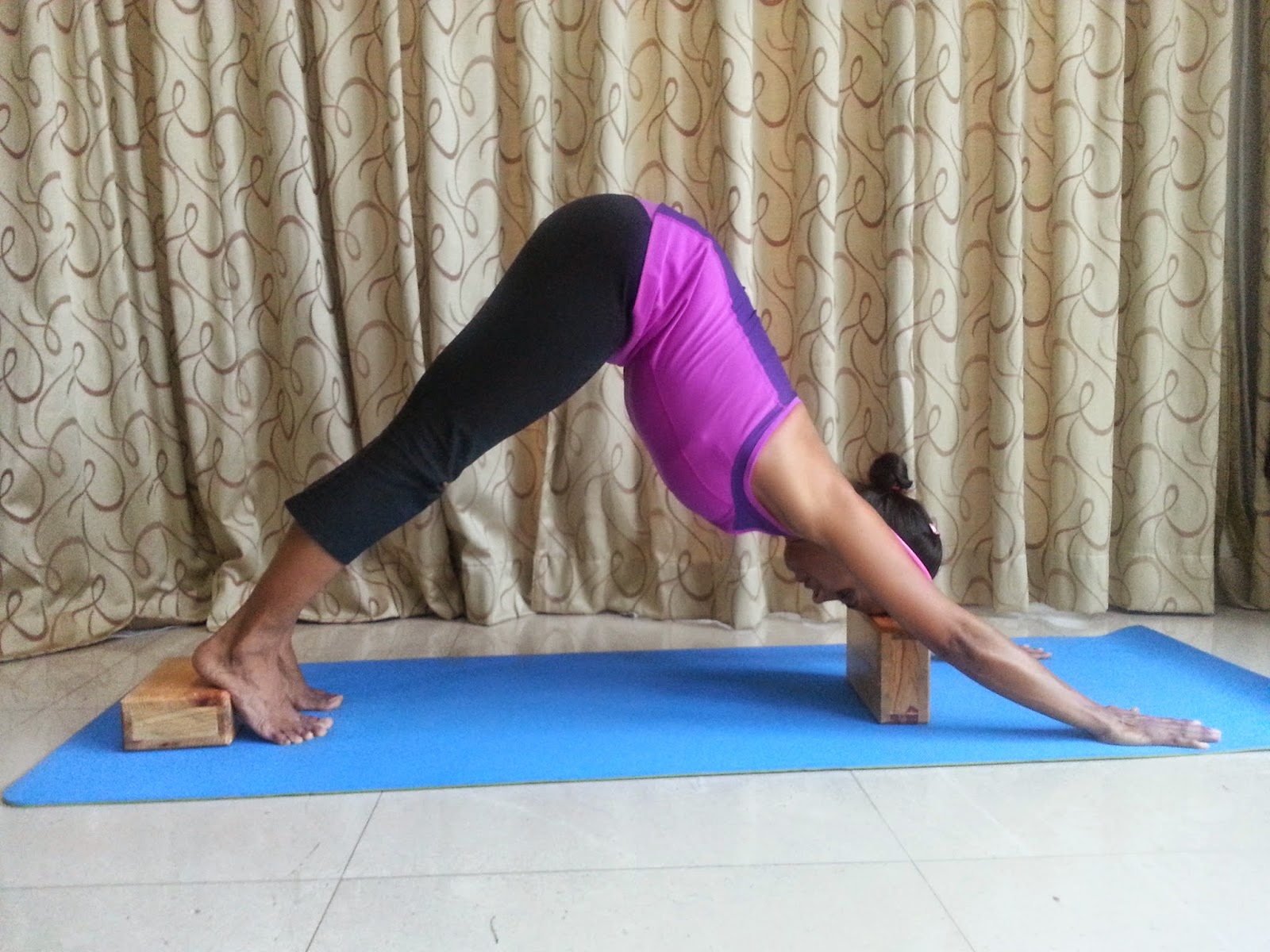The secret to an energized, engaged and fulfilling life is to play with a child". We all were born happy as curious explorer with inexhaustible energy. But where that energy evaporates over time?. Why jumping, walking, running once a fun activity turns demanding on our grown up bodies?.
What happen when we Age;-
Our body is a marvelous machinery, where each and every part is working non stop efficiently in perfect harmony with each other and a little care goes a long way in keeping it healthy. In Yoga the human life is seen in a triangle. Birth as first point of triangle, which represent the growth period with the Top point as Youth and the down line shows the start of Decay as body starts aging.
Modern life : A bane to posture and mobility
'Age is in mind and not in years". But to know you body's age, just bend forward and touch your toes. Our body youth lies in the flexibility of the spine and joints. In everyday life, among the amazing achievements which we perform are walking and standing erect. Although they loo simple, they are as intricate as a juggler's stunt on stage. The domed shape arch of your foot, the shinbone balanced on it, the weight of your thighs and it's bones and the pelvis bearing the entire weight of the body.
But how often we stand erect or walking correctly that's the question to ponder over??. Advancement in modern science and technology has conquered ignorance in many fields. But it all comes with a price tag in form of mental stress and physical diseases. We enjoy a comfortable life as compare to our ancestors, yet our body aches at the end of the day longing for a rested sleep. We sits for hours and hours either on our chairs, car seats, recliners and yet not energized. The answer comes from yoga, a scientific study of union of body, breath and mind. I'm sharing few asanas/poses which can be easily included in your daily life. A regular practice will not only help a good posture, balance, release of stiffness from the joints. But also keep the body supple and energized.
1 TADASANA/ MOUNTAIN POSE
Meaning: Standing upright, straight, steady and unmoved. Therefore implies a pose where
one can stands firm and erect as a mountain.
Technique:
1. Stand erect with feet together. The big toes touching each other and heels slightly apart.
2. Tighten and pull the knee cap up, chest forward, neck straight. Contract hips and stomach in.
3. Distribute the weight of the body evenly on both feet. Notice that the body weight is not
shifting to either the heels or the toes.
4. Arms to side of the thighs with fingers firmly together and pointed down.
5. Inhale lift the arms up. Bring the palms together and point the fingers up.
Benefits:
- Tadasana is a starting pose for all the standing asana. People who do not pay attention to the correct method of standing and suffer from postural problems benefits immensely.
- If you find it difficult to notice if your body weight is on the inner or outer edge of the foot or on more on the heels. Just check the soles and the heels of your shoes, notice which is worn out more out of the two.
- By maintaining a correct standing posture we can remove the pressure on the lower back.
- The mind gets alert as the body feels lighter with proper weight distribution.
- Give stretch to entire spine and eliminate stiffness of the back due to sleep.
Technique:
1. Stand in Tadasana.
2. Bend the right leg at the knee and place the right foot on middle of left thigh. In case of regular practitioner, place the right heel at the root of left thigh. Toes pointing downwards.
3. Balance on the left leg. Keeping your gaze steady at one point in front. Take few breath to steady the mind and get your balance. Join the palm and raise the arms above your head.
4. Stay for few seconds in the pose breathing deeply. Then lower the arms, separate palms, straighten the right leg and stand in Tadasana. Repeat the same with other leg.
Benefits:
- Tones and strengthen the leg muscles.
- Improve balance and stability in the legs.
- Strengthen the ligament and tendon of the feet.
- Strengthen the bones of the hips and legs due to weight bearing nature of the pose.
- Bring the mind into focus.
- Reduce flat feet.
Contradiction: Not recommended for people with Lower blood pressure, insomia. People with high blood pressure keep the palm at the chest
3. UKATASANA/CHAIR POSE (with wall)
Utkata means fierce, powerful. this asana is like sitting on an imaginary chair.
Technique:
1. Stand in Tadasana placing the shoulder, whole back and hips on the wall through the pose
2. Place the hands to the side of hips with palms touching the wall.
3. Move the legs forward, keeping the legs hip width apart. With toes slightly in.
4. Exhale bend the knees till the thighs are parallel to floor. Do not stoop forward and keep
the chest, back and hip supported by wall .
5. Stretch arms up over head. Breath normally and stay in pose for 15 to 30 sec.
6. Inhale lower the arms, palms touching the wall, straighten the legs and come back to
tadasana.
Benefits:
- Removes stiffness of the shoulders.
- The abdominal organs and back are toned.
- Bring determination of the mind.
Contradiction: People suffering from lower back and problem of joints proceed under experienced teacher.
4. UTTANASANA/STANDING FORWARD BEND
Technique:
1. Stand in Tadasana with arms up. Keep knee tight.Firmly press the heels and sole of the feet on mat.
2. Exhale. Bend forward and place the finger on the floor or your shin. Keep the leg and knee straight through out.
3. Stay in the pose for 5 breaths intially and gradually increase the time. Inhale bend the knee slightly and left your arms up coming in Tadasana.
4. Exhale bring your arms to the side of your thighs.
Benefits:
- Stretches the back of the legs(hamstrings).
- Remove stiffness of the lower back.
- This posture is boon for people who get excited quickly, as it soothes brain cells & slow down the heart beat and rejuvenate the nerves.
Contradiction:people with spinal disc issues practice under supervision
5. VAJRASANA/DIAMOND POSE (With blanket )
This Asana resembles like the namaz pose in which Muslims sit for prayer.
Technique
1. Place a folded blanket in the center of the mat. Kneel on blanket and kneel with hip width apart.
2. Bring the toes of the feet together and heels apart. Making a cup with your feet.
3. Place the hips on between the cup of your feet. Your thighs touching the respective calves of your legs. Sit straight, with spine erect.
4. Stay in this pose for few breath and come back in kneel position. Straighten your legs in front Shake then side to side and slowly lie down in Savasana.
Benefits:
- Helps in releasing tiredness of the lower legs.
- Increases strength and mobility of the knees and ankles.
- Aids digestion. Sitting in this asana immediately after food for 15- 20 mins, helps in digestion of the food and proper eliminating from the system.
- The nerves and the muscles of the legs and thighs are strengthened and tiredness of legs and feet is relieved
- Myalgia in the knees, legs, toes and thighs disappears.
Contradiction: people with knee, ankle or joint problems practice under
supervision.
6. SAVASANA/CORPSE POSE
Sava means a corpse. In this asana/pose the object is keep the body motionless and mind
still for some min 10-15 mins. The challenge is to keeping the mind still.
Technique
- Lying on the back, with arms and legs spread at 45 degree.
- Close your eyes and keep a gentle gaze toward your chest.
- Give a gentle command to mind to stay quite. If you see the thoughts, visuals coming just observe them and let them be.
- Bring your attention to the movement of your breath on your chest. Slowly start breathing deeply.
- Mentally scan your body for any pain or sensations and relax the area concerned.
- To come out of Savasana, flex your toes and fingers and turn to right side of body.
- Stay there for few second and come up in sitting position.
Benefits:
- After the exertion of the asana above, this conscious relaxation invigorated the body.
- Furthermore, there are various physiological benefits like: a decrease in heart rate and respiration.
- Decline in blood pressure and general anxiety.
- Increases the energy level and improve focus and stimulate deeper sleep.
So it's time to stand tall and firm , Sink your two feet and reach higher.
That’s what life is about STANDING TALL COME VICTORY OR SET BACKS.
NAMASTE


















